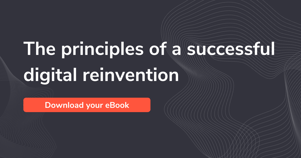The build vs buy software dilemma.
It’s a decision you can spend days deliberating as you weigh up the pros and cons.
We’re here to help.
If you’re currently considering whether to buy an external SaaS platform or build your own software in-house, think about these 6 factors first.
1. Cost
Start with cost.
But don’t just look at your initial outlay. It’s critical to map out your costs throughout the entire software lifecycle.
According to the Standish group, 53% projects cost 189% of original estimate.
BUY IT
Your vendor incurs the costs of maintenance, plus designing and testing the software. You have no software capital investment, just your subscription fee for access.
And because the vendor has a large customer base, they can charge a lower amount due to efficiencies of scale.
You will have to consider the costs of training your employees on the software, but this is also true with a build.
BUILD IT
There’s no softening the blow on this one. Building your own software is a serious investment.
You bear the entire cost – from the design and development to QA testing, ongoing maintenance and deployments.
And if you want to make any changes, it can be expensive and time consuming – 70% of software costs occur after implementation.
2. Control
By control, we mean how much say you have over the way your software is implemented and how it impacts your product roadmap.
BUY IT
Buying from a vendor means you’re never going to have full control.
You can always give your feedback, but there’s no guarantee you’ll get every single feature you need.
However, if your requirements help a vendor improve their software for multiple customers, they’d be remiss not to build the features into their roadmap.
It comes down to the kind of relationship you have. If you find a vendor that’s open to working as a partner, rather than the traditional vendor-buyer relationship, you could find a level of control that suits your strategic plans perfectly.
BUILD IT
If you build, you’re going to have control over your product functions. You can specifically design your software with all your needs in mind.
But with control comes risk and responsibility. You’ll carry all the build risk, with no strategic partner to be held accountable.
You’ll also need an exceptional software development team with the time to focus entirely on your build. There’s no guarantee members of your team won’t move on, leaving you with a big knowledge gap.
3. Maintenance
Without continual maintenance, your software won’t run smoothly, correct faults or continually improve.
BUY IT
Your vendor handles all maintenance so you can focus on the important things. The things that help you generate revenue.
If you’re buying, be sure to get a service-level agreement (SLA) in place so all parties are clear on responsibilities for the use and maintenance of the software.
BUILD IT
All maintenance is up to you – from training and compliance to upgrades and development.
This can be a drain on your resources, requiring more staff, plus budget allocation for the running of the software.
The costs of running a code base usually build up over time, so factor in budget for the costs you might encounter along the way.
4. Time
Every project has a schedule, so what kind of time frame are you working with?
BUY IT
If speed is really of the essence, buying a ready-made solution makes sense. You’ll reduce time to value and cut your opportunity cost in the process.
Your time investment consists of evaluating SaaS platforms, deciding on one and launching it.
All implementations are different, but you can see how long it’s taken a provider to launch with a similar use case.
A ballpark timeline when buying is 3 – 9 months to market from your decision.
BUILD IT
Going for a new design and build can provide delivery timescale challenges.
You have no referenceable timescales for deploying the same functionality as a software provider, making it hard to set a timeline.
Your people will be accountable for the timeline, rather than a partner, which has its pros and cons.
It depends on the scope of the project, but build time usually ranges from 9 – 18 months until you get your platform up and running.
5. Support
BUY IT
If you decide to buy, you can rely on a whole community that’s already gone through the software implementation numerous times.
Your vendor can provide training, user manuals, and ongoing expert support.
You’ll also get a knowledge base that’s spread out over many resources.
BUILD IT
Taking a self-build approach may leave you without the necessary global support and SLA.
You can build this support capacity in-house, but it will be expensive. You will also have competing internal projects for budgets, alongside the inevitable challenges of staff continuity.
6. Future needs
The final thing to consider in your build vs buy software decision is your future needs.
Are you planning on rolling the software out across the whole company or just a few departments? What are your long-term goals for the software?
BUY IT
If you’re looking for speed, convenience and support, without putting too much weight on customization, buying is your best bet.
You’ll benefit from a solution that is updated regularly – both to keep up with technology developments and meet the needs of multiple customers.
BUILD IT
Choosing to build, you open yourself up to the ongoing costs that come with building and running code.
It also leaves you with limited flexibility if you want to pivot or support new technologies.
But if you’re looking for something that meets your specific requirements – requirements that are unlikely to change – investing the time and money into a build could be an option worth pursuing.
To buy, or not to buy…
With global enterprise software spending projected to grow 8.2% by the end of 2020, reaching around $466 billion in value, many companies are finding it more convenient and sustainable to buy software.
But buying isn’t for everyone.
If you’re still unclear on which direction to take, we’d suggest drawing up a matrix mapping your requirements against an in-house build and outsourced solution.
If you’d like advice from our CPQ services experts, just drop us a line here.
Alternatively, if you want to see the methods used by businesses in successful digital transformations, download our free guide now.
.png?width=200&height=103&name=CloudSense%20-%20TelcoDR%20(white%20no%20background).png)

















